
- 10 Fascinating Facts About the Sagrada Familia You Didn't Know
- The History Behind Barcelona's Iconic Landmark: Sagrada Familia
- Unique Architectural Features of the Sagrada Familia Explained
- Why the Sagrada Familia Remains Unfinished: Insights and Theories
- Exploring the Symbolism in the Sagrada Familia's Design
- Visiting the Sagrada Familia: Tips for an Unforgettable Experience
The Sagrada Familia, an architectural masterpiece designed by Antoni Gaudí, is one of Barcelona's most recognizable symbols. Its intricate facades and stunning towers draw millions of visitors each year, making it a true icon of the city. In this article, we will explore **Sagrada Familia: 10 Fascinating Facts About Barcelona's Iconic Landmark**, uncovering the secrets behind its design and construction.
From its unique blend of Gothic and Art Nouveau styles to the ongoing construction that has captivated audiences for over a century, the Sagrada Familia is more than just a basilica; it's a testament to human creativity and perseverance. Join us as we delve into ten intriguing facts that highlight the significance of this extraordinary monument in Barcelona's rich cultural landscape.
10 Fascinating Facts About the Sagrada Familia You Didn't Know
Did you know that the Sagrada Familia has been under construction since **1882**? This remarkable project, initiated by architect Francisco de Paula del Villar, was later taken over by Antoni Gaudí, who dedicated most of his life to its design. As a result, the basilica is expected to be completed in **2026**, marking the centenary of Gaudí's death. This timeline truly reflects the immense complexity and ambition of the project.
One of the most fascinating aspects of the Sagrada Familia is its use of **natural forms** and **geometric shapes**. Gaudí was inspired by nature, which is evident in the basilica's design. For instance, the columns resemble trees, branching out to support the ceiling like a forest canopy. This innovative approach not only creates a unique aesthetic but also enhances the structural integrity of the building.
The Sagrada Familia is adorned with over **18 towers**, each symbolizing different religious figures, including the Virgin Mary and the apostles. The tallest of these towers, dedicated to Jesus Christ, is projected to reach a height of **172.5 meters**. This subtle yet powerful number is intentionally designed to be shorter than the nearby Montjuïc hill, representing that human creations, no matter how grand, should remain humble before nature.
- Construction Start Year: 1882
- Expected Completion: 2026
- Number of Towers: 18
- Height of the Main Tower: 172.5 meters
The History Behind Barcelona's Iconic Landmark: Sagrada Familia
The history of the Sagrada Familia is as intricate as its design. Construction began in **1882** under architect Francisco de Paula del Villar, who envisioned a traditional Gothic church. However, after a year, **Antoni Gaudí** took over, transforming the project into a unique blend of Gothic and Art Nouveau styles. His vision included an ambitious plan to create a monumental basilica that would stand the test of time, reflecting both his artistic genius and deep religious faith.
Gaudí dedicated over **40 years** of his life to the Sagrada Familia, often working on it in isolation. His intense focus and innovative techniques set new standards in architecture. He famously stated, “My client is not in a hurry,” referring to the church's construction timeline, which remains ongoing. This perspective underscores the importance of craftsmanship over expediency, allowing the basilica to evolve over generations.
Throughout its construction, the Sagrada Familia has faced numerous challenges, including political upheaval and financial constraints. Despite these obstacles, the project has continued to attract support and funding from around the world. Today, the basilica is not only a religious site but also a **UNESCO World Heritage Site**, recognized for its cultural significance and architectural innovation.
- Initial Architect: Francisco de Paula del Villar
- Gaudí's Involvement: Took over in 1883
- Years of Contribution: Over 40 years until his death in 1926
- UNESCO Status: World Heritage Site since 2005
Unique Architectural Features of the Sagrada Familia Explained
The Sagrada Familia's design is distinguished by its unique integration of natural forms and structural innovation. One of the most striking features is the use of hyperboloid shapes, which not only enhance its aesthetic appeal but also improve stability. Gaudí's vision was to mimic nature, resulting in a structure that feels both organic and otherworldly. This approach allows the basilica to blend harmoniously with its surroundings.
Another architectural marvel is the intricate play of light within the Sagrada Familia. Through the use of colored stained glass windows, sunlight floods the interior, creating a dynamic atmosphere that shifts throughout the day. This technique highlights the spiritual essence of the basilica, as the changing colors symbolize the divine presence. Visitors often find the interplay of light and shadow to be one of the most captivating aspects of their experience.
The basilica's facades, each with its own narrative, showcase Gaudí's storytelling ability through architecture. The Nativity Facade, for example, is rich in symbolism, adorned with detailed sculptures that depict the birth of Christ. In contrast, the Passion Facade presents a stark and dramatic interpretation, focusing on the suffering of Jesus. These contrasting styles reflect the dual nature of life and spirituality, inviting contemplation from viewers.
- Hyperboloid Shapes: Provide structural stability and aesthetic appeal.
- Stained Glass Windows: Create a dynamic interplay of light and color.
- Facades: Each tells a different story, symbolizing various aspects of Christianity.
- Narrative Elements: Rich details that engage visitors in a deeper spiritual experience.
Why the Sagrada Familia Remains Unfinished: Insights and Theories
The Sagrada Familia remains unfinished due to a combination of factors that include its ambitious design, evolving construction techniques, and historical disruptions. Originally, the project was expected to take just a few years, but the intricate details and Gaudí's unique vision have led to ongoing challenges. The complexity of the architecture requires highly specialized skills, which further extends the timeline.
Several theories have emerged regarding the reasons behind its prolonged construction. One prevalent theory suggests that financial constraints have significantly impacted the pace of work. Funding relies heavily on donations and ticket sales from visitors, which can fluctuate during economic downturns. Additionally, the effects of political turmoil in Spain, especially during the Spanish Civil War, disrupted progress and resulted in the loss of many of Gaudí’s original models and plans.
Another important factor is the advancement in technology and construction methods that have been adopted over the years. As new techniques are developed, the design continues to adapt, leading to modifications that align with modern standards. This evolution has created a dynamic relationship between tradition and innovation, making the Sagrada Familia a living project that reflects both its historical roots and contemporary architectural practices.
Ultimately, the unfinished status of the Sagrada Familia symbolizes more than just architectural ambition; it represents a commitment to artistry and craftsmanship that transcends time. Visitors are often captivated by this narrative, which adds to the basilica’s charm. As it stands, the ongoing construction serves as a reminder of the enduring spirit of creativity that Gaudí envisioned.
Exploring the Symbolism in the Sagrada Familia's Design
The Sagrada Familia is replete with deep symbolism woven intricately into its design, reflecting Gaudí's profound religious beliefs and appreciation for nature. Each element serves a purpose beyond mere aesthetics; they embody spiritual messages and natural forms. For instance, the basilica's columns, designed to resemble trees, symbolize the connection between heaven and earth, inviting visitors to experience a sense of divine presence while surrounded by nature's beauty.
Furthermore, the facades of the Sagrada Familia are not just architectural features but narratives that convey essential stories of Christianity. The Nativity Facade, adorned with intricate sculptures, celebrates the birth of Jesus and life’s joy, while the Passion Facade starkly contrasts with its focus on the suffering of Christ. This duality in design encapsulates the journey of faith, illustrating both the joy and the struggles inherent in spiritual life, resonating with visitors on multiple levels.
Another fascinating aspect of the basilica's symbolism lies in its number of towers. With a total of 18, each tower represents a significant religious figure, which underscores the Christian narrative. The tallest tower, dedicated to Jesus Christ, extends into the heavens, symbolizing the connection between humanity and the divine. This careful consideration of height and number reflects Gaudí's intention to create a space that not only honors religious figures but also inspires visitors to reflect on their own spiritual journeys.
Finally, the utilization of light within the Sagrada Familia amplifies its symbolic significance. The colored stained glass windows are not merely decorative; they transform sunlight into a spectrum of colors that dance across the interior, creating a spiritual ambiance. This interplay of light and shadow is intended to symbolize the divine presence, enhancing the overall experience and encouraging contemplation as visitors navigate through this sacred space.
Visiting the Sagrada Familia: Tips for an Unforgettable Experience
When planning your visit to the Sagrada Familia, it's essential to book your tickets in advance. This iconic landmark attracts millions of tourists annually, and purchasing tickets online can help you avoid lengthy queues. Additionally, consider opting for a guided tour to gain deeper insights into Gaudí's vision and the basilica's intricate details, making your experience even more enriching.
Timing your visit can significantly enhance your experience. Early mornings or late afternoons are often less crowded, allowing you to appreciate the majestic architecture in a more serene atmosphere. Moreover, visiting during the golden hour can be particularly rewarding, as the sunlight casts beautiful hues through the stunning stained glass, creating a magical ambiance inside the basilica.
- Tip 1: Book tickets online to skip the line.
- Tip 2: Consider a guided tour for in-depth information.
- Tip 3: Visit during off-peak hours for a quieter experience.
- Tip 4: Enjoy the play of light and color in the late afternoon.
Lastly, take your time to explore the surrounding area. The Sagrada Familia is situated in a vibrant neighborhood filled with cafes and shops, making it a perfect spot to unwind after your visit. Don't forget to capture some photos of the basilica from different angles—each perspective reveals new details and beauty. This will not only enhance your experience but also provide lasting memories of this architectural wonder.
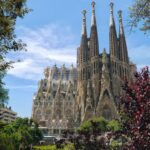 Discover the Complete Sagrada Familia: Barcelona's Architectural Masterpiece
Discover the Complete Sagrada Familia: Barcelona's Architectural Masterpiece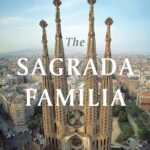 The Sagrada Familia: An In-depth Explanation of Gaudí's Masterpiece
The Sagrada Familia: An In-depth Explanation of Gaudí's Masterpiece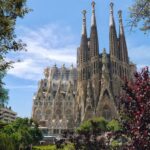 The Fascinating Facts about Barcelona's Iconic Landmark: La Sagrada Familia
The Fascinating Facts about Barcelona's Iconic Landmark: La Sagrada Familia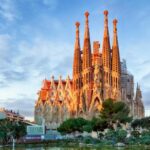 The Fascinating Facts About La Sagrada Familia: Barcelona's Architectural Masterpiece
The Fascinating Facts About La Sagrada Familia: Barcelona's Architectural MasterpieceIf you want to know other articles similar to Sagrada Familia: 10 Fascinating Facts About Barcelona's Iconic Landmark you can visit the category WHERE YOU CAN GO.
Deja una respuesta

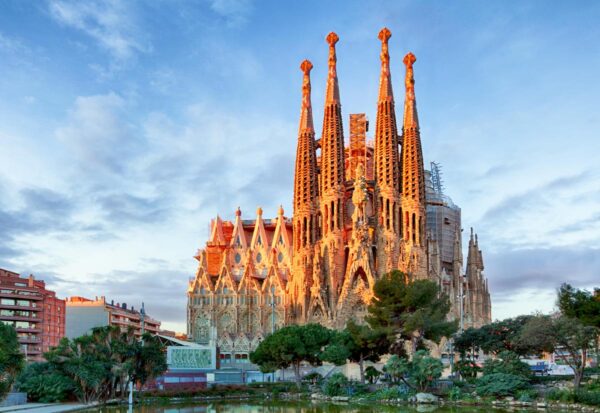








Read more!